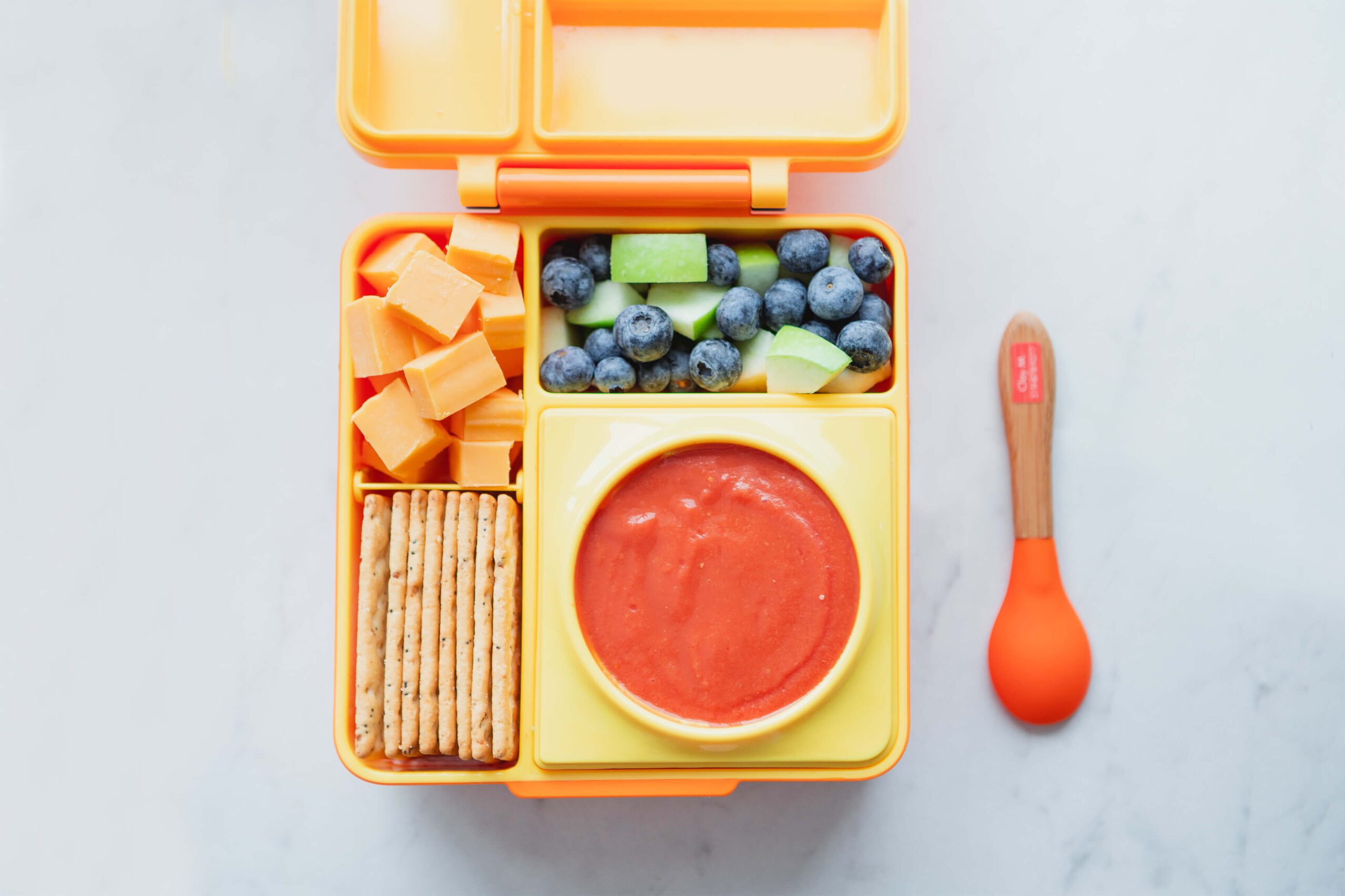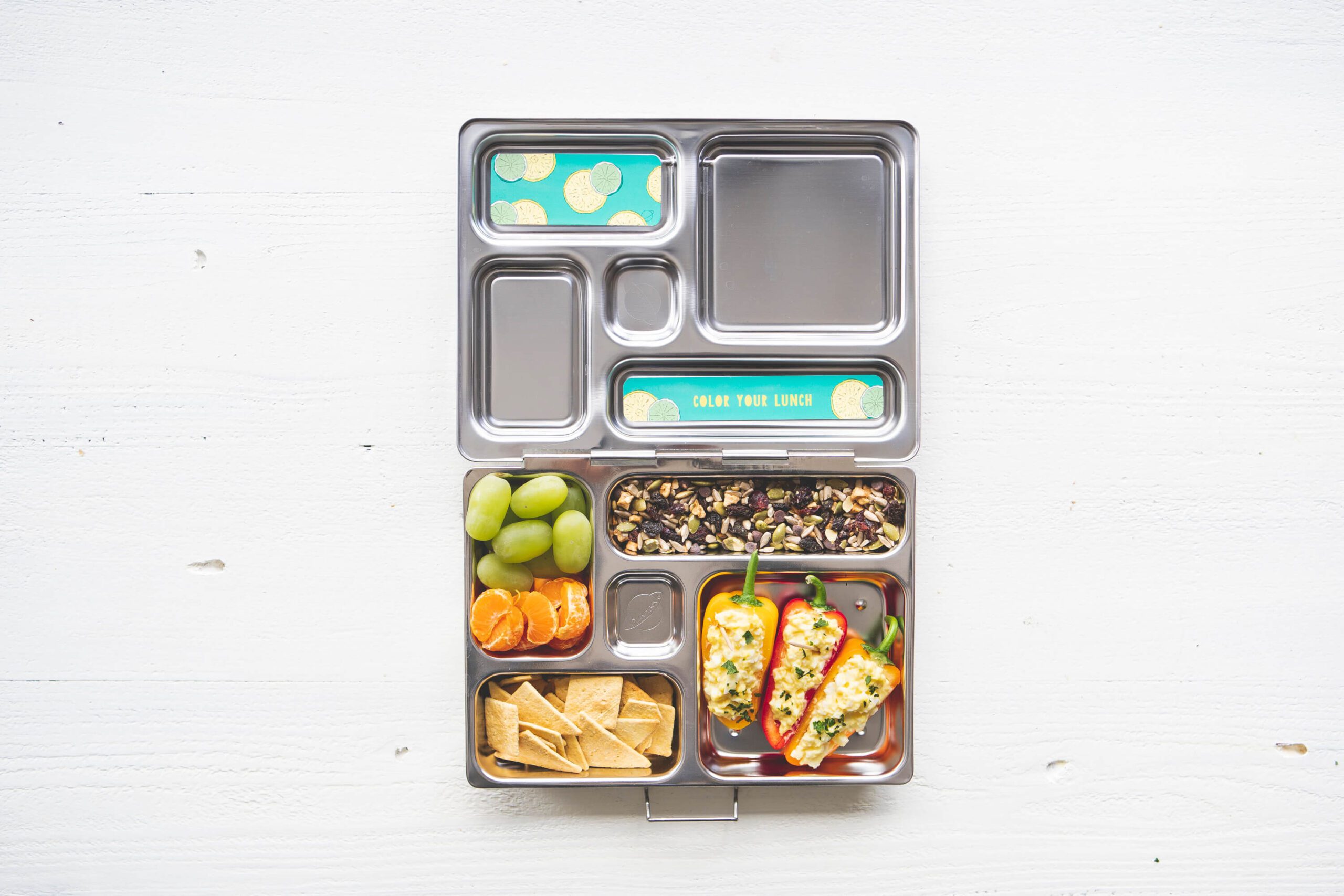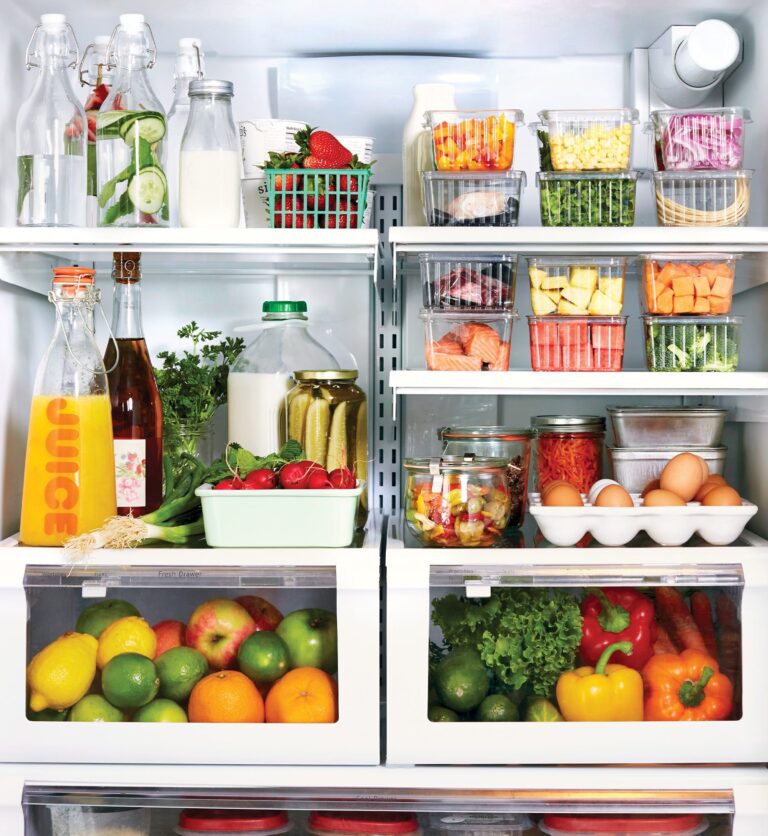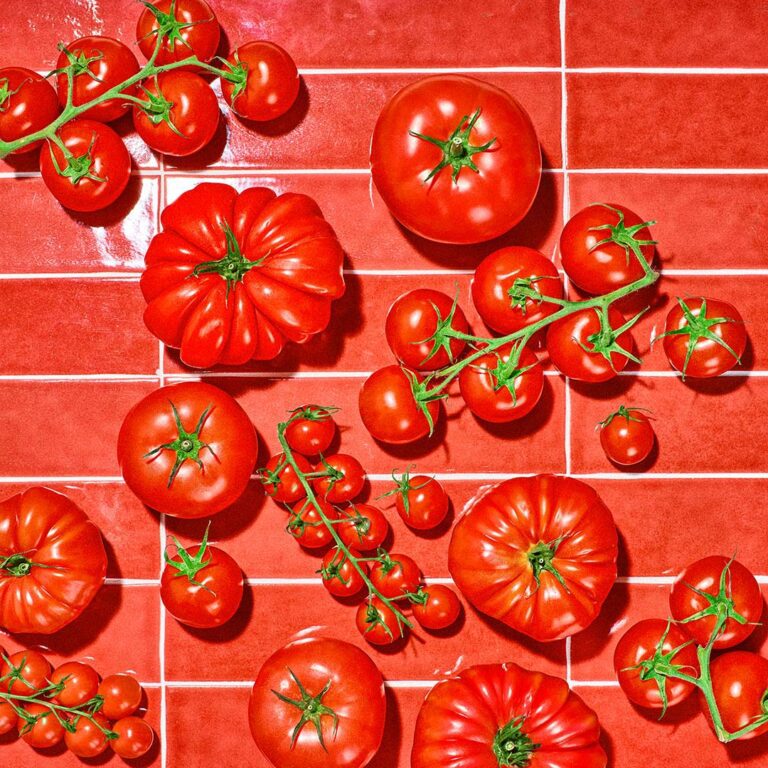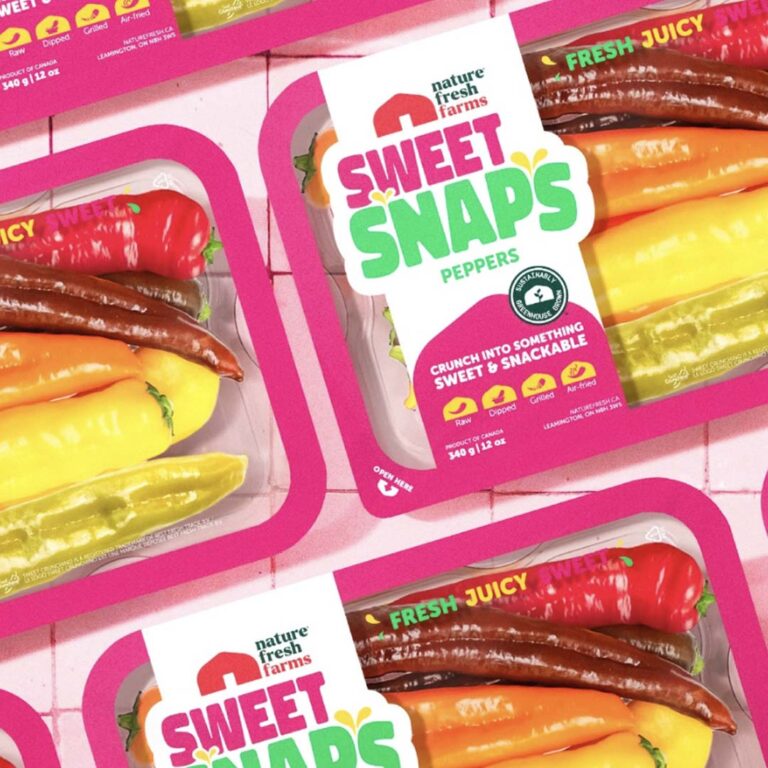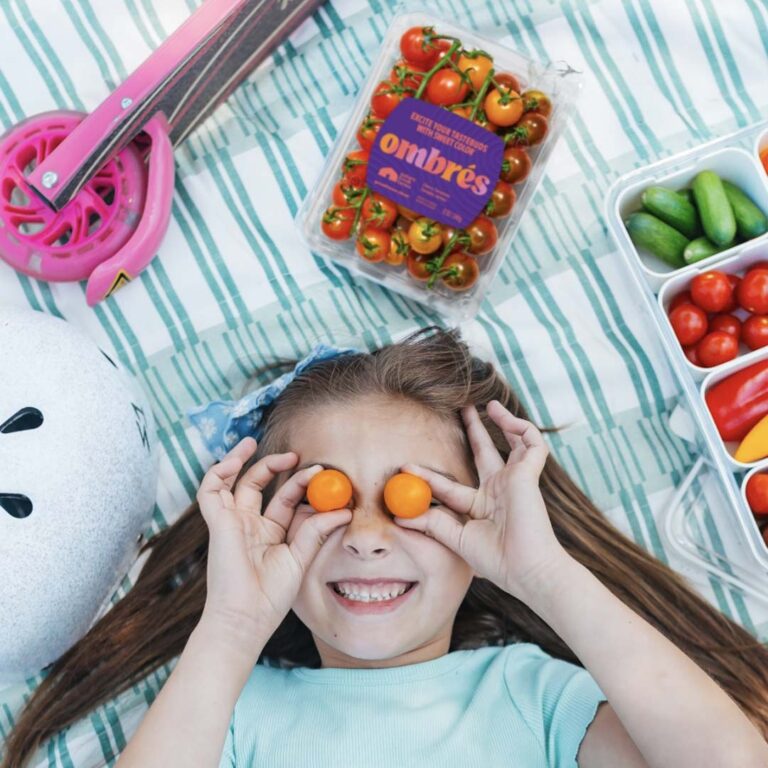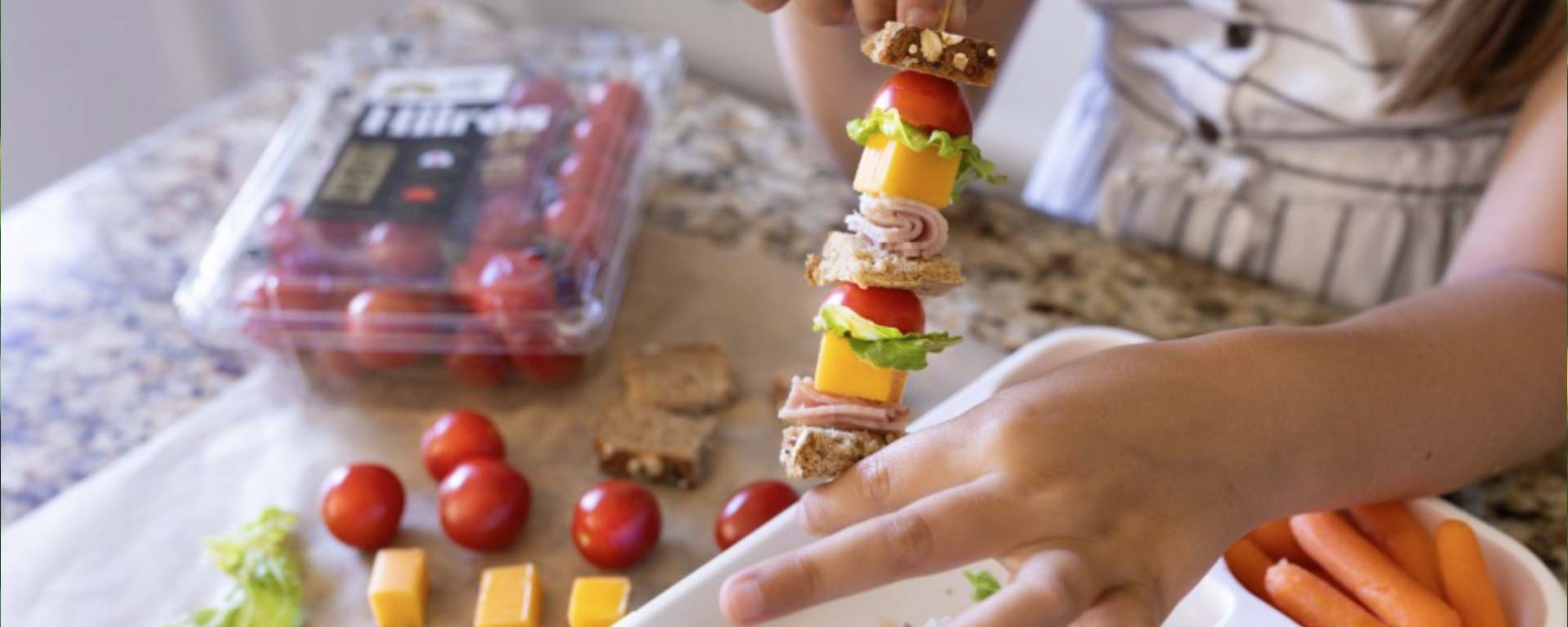
Packing Healthy Lunches For Your Family
Mom-Approved Lunch Packing Tips & Tricks
Whether your child is learning from home or at school, we want to help you feel equipped to nourish them well! We asked Registered Dietitian Noelle Martin to share her best tips for the busy fall season.
5 Tips for Packing Healthy School Lunches
Cook Once, Eat Twice
A major stressor that comes with making lunches is the morning rush. Make extras of weekend brunch options or evening supper options to have as leftovers that you can pack in a school lunch or heat up quickly at home. This can include soups, pastas, chilis, and so much more.
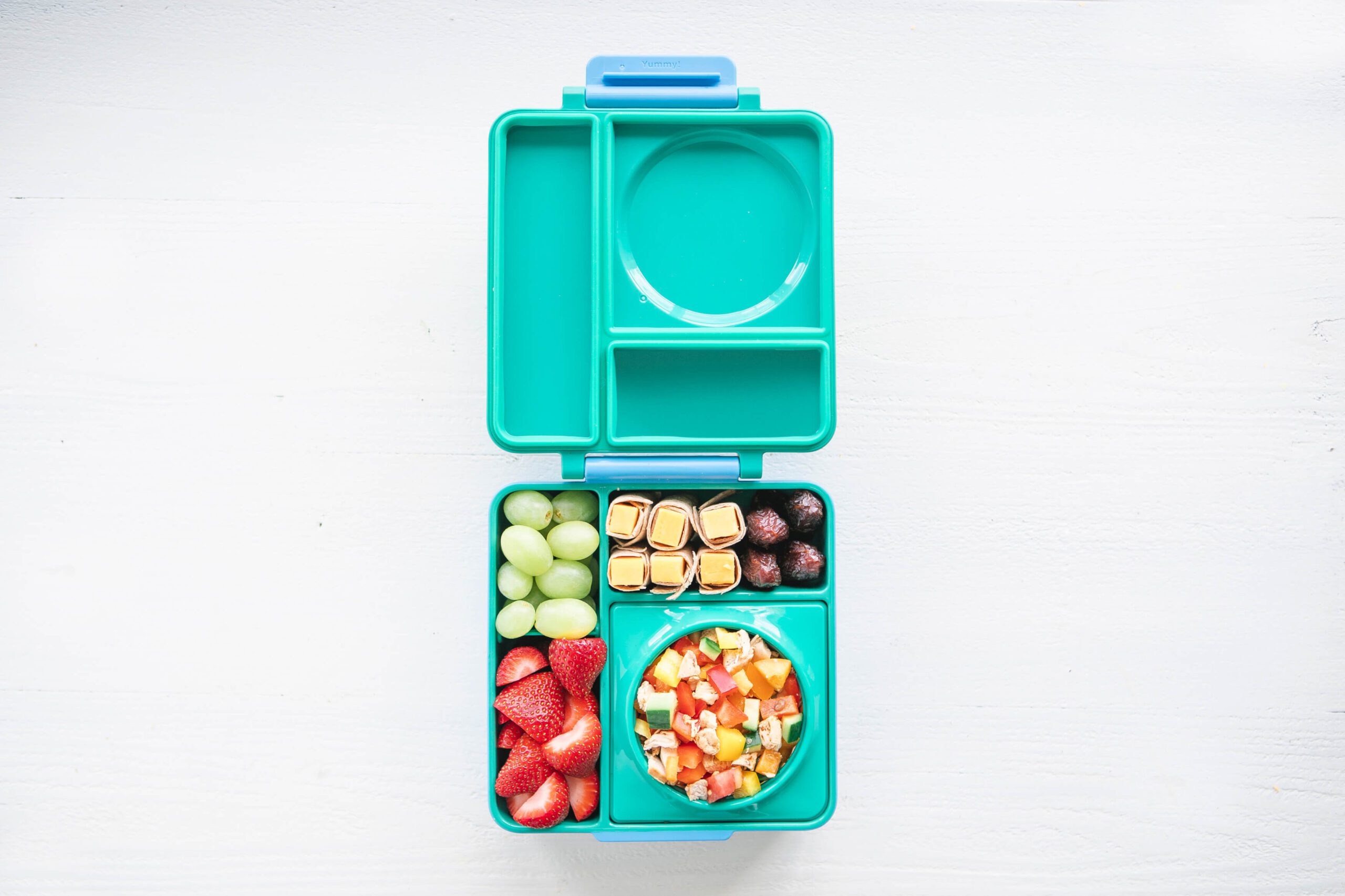
Use a Bento Box
Preparing lunches in a bento box allows your child to open only one container and see all their food options. This not only saves on time, but also creates ease for going back and forth between food choices. While this may seem like a tip for school-based lunches, it has incredible value for home school, too.
Keep Cold Foods Cold & Hot Foods Hot
Food safety is very important but can be challenging when foods are taken outside the home. You can help your child’s lunch food stay at appropriate temperatures with the following steps:
- Send one (or more) small ice packs. If your child enjoys yogurt, lunch meat, cheese, hummus, and other foods that need to stay cold, remember to add an ice pack beside each cold food.
- Send hot items in a thermos. There are several great options of stand-alone thermoses for kids. For the best temperature retention, pour boiling water into the thermos for 5 minutes, then drain it right before adding your child’s hot food to it.
- Talk to your children about which foods are most perishable or temperature sensitive. You can remind your child that their yogurt will be fresher at first break than last break, or that their veggie dip may be warmer than ideal by afternoon snack. Try not to tell them when to eat certain foods – make it more about which foods have a limit on freshness or temperature.
Offer Choices within Limits
Would you like Cucumber slices or spears? Would you like guacamole or hummus for dip? Would you like Snacking Tomatoes or Bell Pepper slices? Asking these simple questions can make a world of difference. When your child chooses the Cucumber slices, Bell Peppers, and hummus in their lunchbox, they are more likely to eat them.
Offer Variety
It can be tempting to send the same foods on repeat when you find a few options your child is sure to eat. But, the danger in this is the potential of boredom. And boredom tends to lead to food aversions. To keep your child interested in the foods they already love, and also in trying new foods, offer variety in the foods you serve in texture, color, shape, flavor, and more!
5 Tips for Packing a Nourishing Lunch (That Your Kids Will Actually Eat!)
Okay, now that we’ve looked at a few strategies for how to pack a lunch that your child will be excited to eat, let’s talk about what to pack!
Whether at home or school, kids need continuous nourishment for their growing and active bodies and brains. Here are a few tips to help you pack a lunch that meets their needs and tastes great too!
Offer Brain-Boosting Foods
It’s fascinating to see how a healthy, balanced diet can affect a child’s brain development and behavior pattern.
What nutrients support brain development and optimal behavior?
Omega 3 fatty acids, iron, and choline have a strong association with brain development and mental health. Also, lack of zinc, iron, probiotics, prebiotics, and omega 3 fatty acids have been associated with attention, memory, and learning difficulties.
What are lunchbox friendly ideas that offer these nutrients?
- Pasta Salad – Start with your child’s favorite pasta and toss it with diced chicken, Bell Peppers, Cucumbers, Tomatoes, and your child’s favorite salad dressing
- Greek yogurt and berry bowl
- Tex-Mex Egg Bites
Offer Growth-Boosting Foods
Children are constantly building muscles and bone strength. The foods they eat during the day, as well as the sleep they get at night, help them reach their growth potential.
Offer Growth-Boosting Foods
Protein, calcium, and vitamin A (or beta carotene) are some of the main building blocks to support this growth.
What lunchbox friendly ideas that offer these nutrients?
- Pasta Salad – Start with your child’s favorite pasta and toss it with diced chicken, Bell Peppers, Cucumbers, Tomatoes, and your child’s favorite salad dressing
- Greek yogurt and berry bowl
Offer Energy-Boosting Foods
Children are constantly building muscles and bone strength. The foods they eat during the day, as well as the sleep they get at night, help them reach their growth potential.
What nutrients help meet energy needs?
Foods rich in carbohydrates, healthy fats, iron (paired with vitamin C), and B vitamins will help your children stay energized all day. More than ever, we are all looking to increase our protection against illness. While handwashing and sleep are incredibly important for meeting this goal, food choice also makes a significant impact.
What are 3 lunchbox friendly ideas that offer these nutrients?
- Whole grain pasta with Tomato sauce and hemp hearts
- Whole grain muffin with pumpkin seed butter
- Chili with whole grain crackers
Offer Immune-Boosting Foods
What nutrients offer immune support?
Foods rich in beta carotene, vitamin C, iron, zinc, selenium, vitamin D, probiotics, and omega 3 support our immunity.
What are 3 lunchbox friendly ideas that offer these nutrients?
- Bell Pepper egg salad
- Tomato soup
The Value of an Eating Schedule, At Home or At School
Children thrive on a wonderful balance between routines with boundaries and autonomy with choice. Because of this, setting specific times for them to eat and offering specific food choices is ideal. If your child is attending school, this will naturally happen. If your child is at home, try creating a set schedule that you can rely on for eating opportunities. If your child asks for food outside of set eating times, remind them that it isn’t snack time yet, but it will be after the next activity.
Here is an example conversation:
Child: “Mommy, can I have a snack?”
Parent: “It isn’t snack time yet, but I am going to get out a muffin and Cucumber slices after we make this craft. Would you like to make the craft together and then help me find the muffins in the freezer after that?”
Also, remember that parents and caregivers decide what food is offered and when.
The child then decides if they will eat it or not. You can honor your child’s desire for autonomy by offering a choice between two similar food choices at a meal.
Here is an example conversation:
Parent: “Please come to the table. I have a snack ready for you.”
Child: “Can I have a granola bar instead?”
Parent: “I am planning to serve a granola bar for evening snack. For this snack we have dip, cheese cubes, crackers or a banana muffin.”
The Value of Food Exposure
If your child prefers to eat the same foods and is hesitant to try new foods, try increasing their exposure to foods outside of mealtimes.
The best way to increase your child’s interest in the foods you offer is to involve them in food prep as much as possible. Even 5 minutes of food exposure outside of meals can impact a child’s interest in touching or tasting a new food. And food exposures add up over time!
If you are homeschooling, you can use food preparation times throughout the day as part of your learning activities. Cooking together offers opportunity for:
- Several math activities such as addition, fractions, and measuring
- Practicing letter sounds, spelling, and reading when looking at a recipe
- Noticing/naming colors
- Talking about where food comes from
If your child is at school all day, these could be a weekend or after-school activity as time permits.
Meal Planning Survival
The fall season is often busy, but also a great time to establish new habits and routines. Here are a few that you may want to try to save on time and money.
Prepare a Flexible Evening Meal Plan
Plan for 7 evening meals that you can make over the coming week. Then, once you have your groceries in the house, decide on the exact order based on “best before” dates on perishable foods and any time constraints you anticipate.
Be Realistic About Your Schedule
We’ve all been there: you set up a meal plan that looks great on paper, but then don’t have the time to actually prepare the meals. Before you head to the grocery store, take a look at your calendar and note any really busy days or special events coming up.
Plan to “Cook Once, Eat Twice”
 When creating your meal plan see how many times you can prepare one meal and make portions of it stretch into future meals. For example, make a double portion of chicken on Monday night, and then dice up leftover chicken onto a pizza or pasta on Tuesday for supper. Or try making chili with salad on Friday and use the leftover chili as a yummy baked sweet potato topper for a quick Saturday night meal.
When creating your meal plan see how many times you can prepare one meal and make portions of it stretch into future meals. For example, make a double portion of chicken on Monday night, and then dice up leftover chicken onto a pizza or pasta on Tuesday for supper. Or try making chili with salad on Friday and use the leftover chili as a yummy baked sweet potato topper for a quick Saturday night meal.
Weekly Fridge, Freezer, & Pantry Audit
This is by far my best money saving tip! Before you go grocery shopping, take a few minutes to see what is in the house to prevent you from buying things you don’t need and remind you of what you need to use up. And if produce is getting wilted in your fridge, throw it into a big pot and make soup! This is always a welcome way to reduce waste and create a wonderful meal.
Make a Grocery List (& Stick to It)
In making a grocery list, you are creating intention for what you will buy and reducing the chance of impulse food choices.
Make a grocery list of the foods you need in the groupings that resemble the layout of the store. Start with the fresh produce and baked goods, then food that comes from the aisles, and finish with fridge and freezer items to ensure that they are kept as close to ideal temperature as possible. Be mindful of making your list with all ingredients you need so that you aren’t left short in the middle of a recipe.

